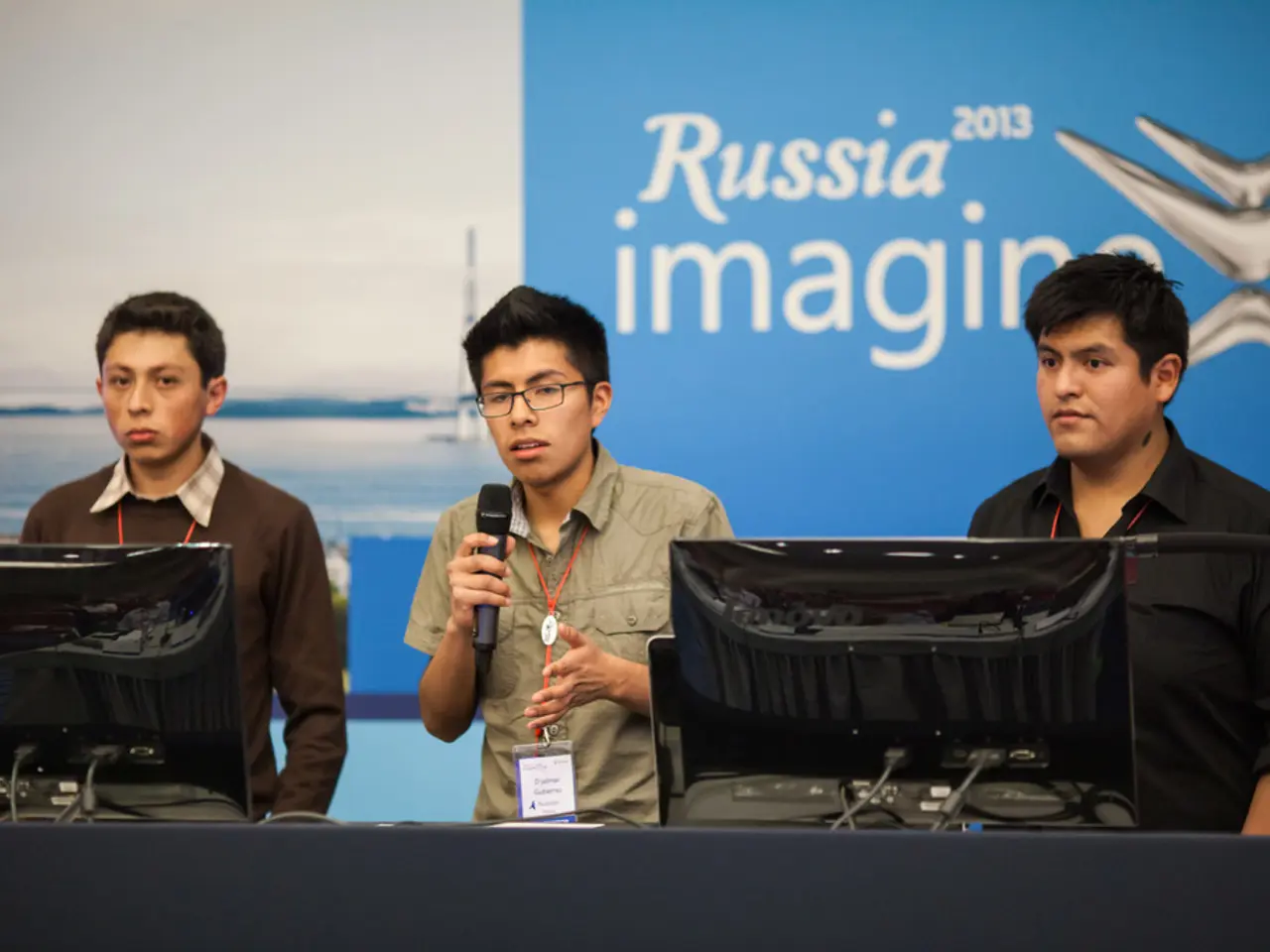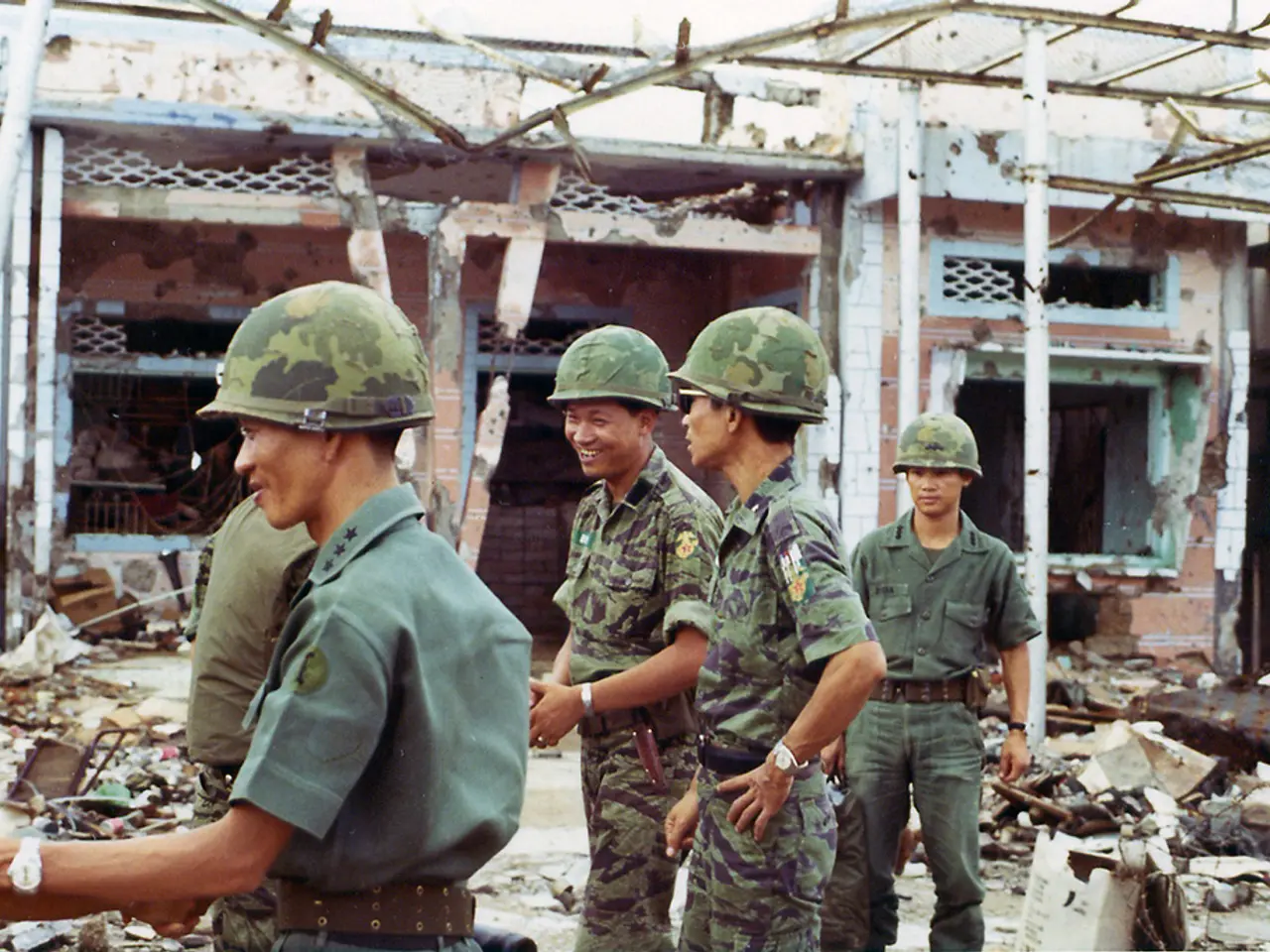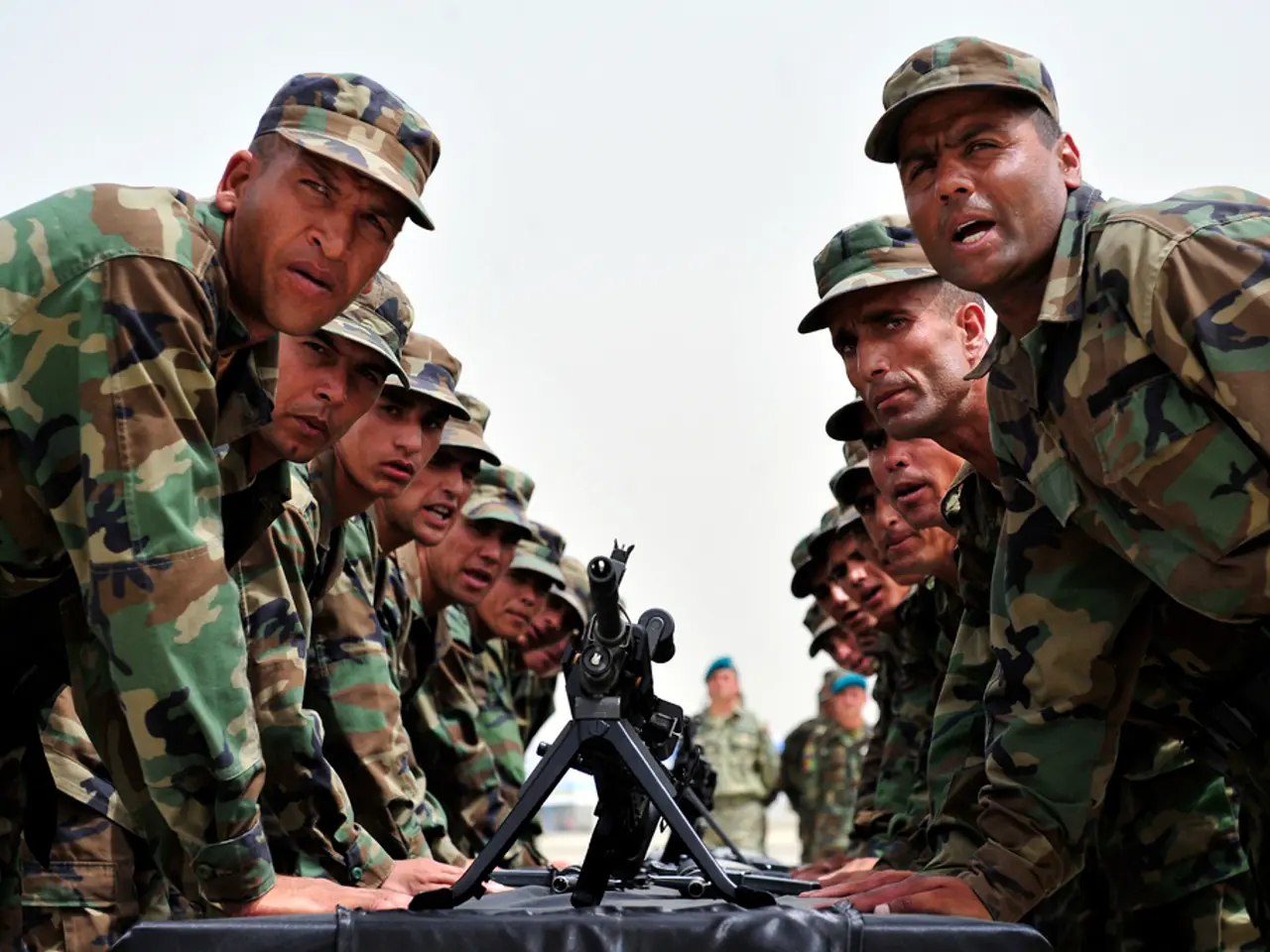Exploring the Enigma of China's Military Strategy
In a recent study titled China's Military Power: Assessing Current and Future Capabilities, author Roger Cliff delves into the People's Liberation Army's (PLA) military strategy, shedding light on the complex tactics and objectives that underpin China's military might.
Cliff's analysis paints a picture of the PLA strategy as a sophisticated blend of preventive denial and rapid offensive operations, designed to undermine U.S. military advantages regionally and complicate Washington’s defense posture.
The PLA's focus is on denying U.S. military intervention in regional conflicts, particularly near Taiwan and other contested areas. To achieve this, the PLA is developing advanced anti-access/area denial (A2/AD) capabilities, such as precision missiles, advanced submarines, naval assets, and cyber/electronic warfare systems, to keep U.S. forces at a distance.
Simultaneously, the PLA is modernising its capabilities across air, sea, space, cyber, and missile forces, adopting advanced technologies to challenge U.S. superiority in command, control, communications, intelligence, surveillance, and reconnaissance (C3ISR). This modernisation is aimed at conducting coordinated operations involving the PLA Army, Navy, Air Force, Rocket Force, and Strategic Support Force to rapidly achieve decisive outcomes in regional conflicts.
The PLA is also investing heavily in missiles that can target aircraft carriers, bases, and logistical hubs, with the intention of limiting U.S. power projection and reinforcing China’s regional dominance.
These strategies present potential threats to the United States by challenging the U.S. ability to project power in the Western Pacific, creating vulnerabilities in U.S. military command and control due to PLA advances in cyber and space warfare, and increasing the risk of rapid escalation in flashpoints like Taiwan.
Modern wars, as Roger Cliff notes, are decided by strategy and doctrine. The Chinese military strategy may involve an amphibious invasion in new domains outside China's sphere of influence, akin to the German invasion of Norway in 1940 (Operation Weserübung) as suggested by Col. Stanislav Lunev, a Russian defector.
In such a scenario, infiltration troops could pick up uniforms and weapons at secret arms caches once inside the United States. The Chinese military may anticipate occupying territory with civilian resistance, which they refer to as "terrorism."
It is important to note that the Communist Party in Beijing subscribes to Leninist revolutionary theory, which seeks to engineer the downfall of capitalism. The PLA's fourth "Campaign Guidance" concept supports the first three and focuses on "counter-terrorist operations." General Chi Haotian, in a secret speech, referred to the killing of women, children, and prisoners of war in the context of counter-terrorist operations.
The Huffington Post recently published an article titled "Putting China on Our Border," highlighting the growing concern and the need for the U.S. to adapt its planning, force posture, and alliances in the Asia-Pacific to meet these strategic challenges posed by China.
Lunev also noted that the ideas presented in the Zimmerman Telegram, during World War I, were ahead of their time, suggesting a potential military alliance between Mexico and an invading power. However, at that time, Germany was not in a position to invade the United States or position troops in Mexico.
In conclusion, understanding the PLA's military strategy is crucial for the U.S. to adapt its planning, force posture, and alliances in the Asia-Pacific to meet the enduring strategic challenges posed by China.
- The PLA's military strategy, as outlined by Roger Cliff in the study China's Military Power, includes preventive denial and rapid offensive operations, which could potentially threaten the U.S.'s ability to project power in the Western Pacific.
- Simultaneous to this, the PLA is also focusing on subversion tactics, such as infiltration troops picking up uniforms and weapons at secret arms caches once inside the United States, a scenario hinting at potential threats to general news and politics.
- China, under the influence of Leninist revolutionary theory, may anticipate occupying territory with civilian resistance, which they refer to as 'terrorism', a concept supported by the PLA's fourth "Campaign Guidance" concept.
- In light of these strategic challenges posed by China, the Huffington Post has published an article titled "Putting China on Our Border", emphasizing the need for the U.S. to adapt its planning, force posture, and alliances in the Asia-Pacific.
- Historical precedents, such as the Zimmerman Telegram during World War I, suggest a potential for military alliances that could challenge the U.S., with Russia playing a possible role, as noted by Colonel Stanislav Lunev. However, at that time, Germany was not in a position to invade the United States or position troops in Mexico.








